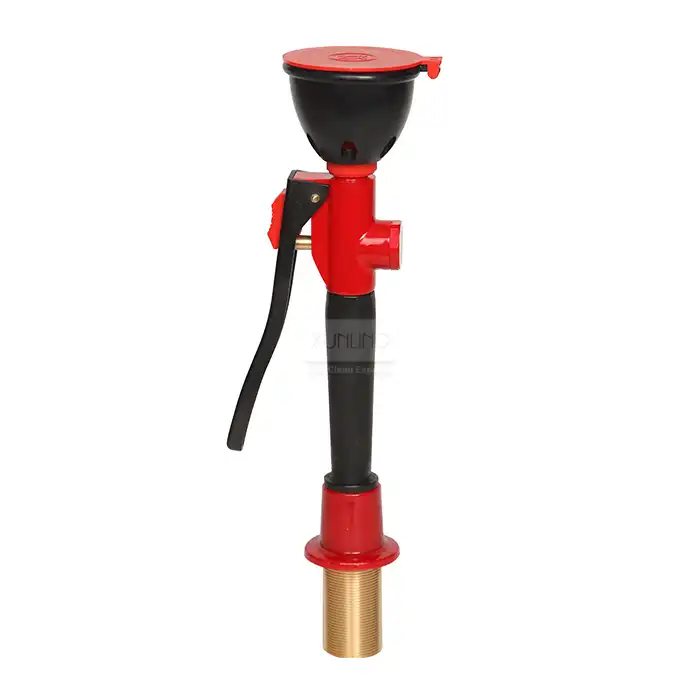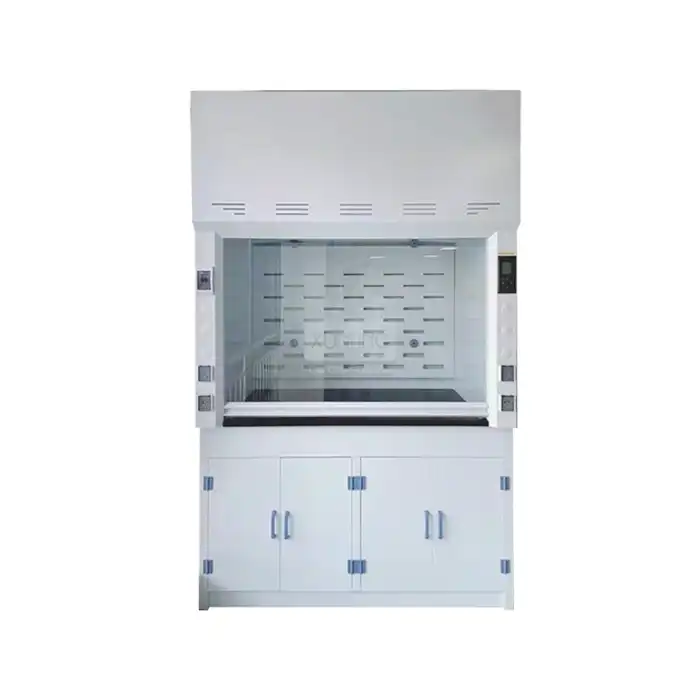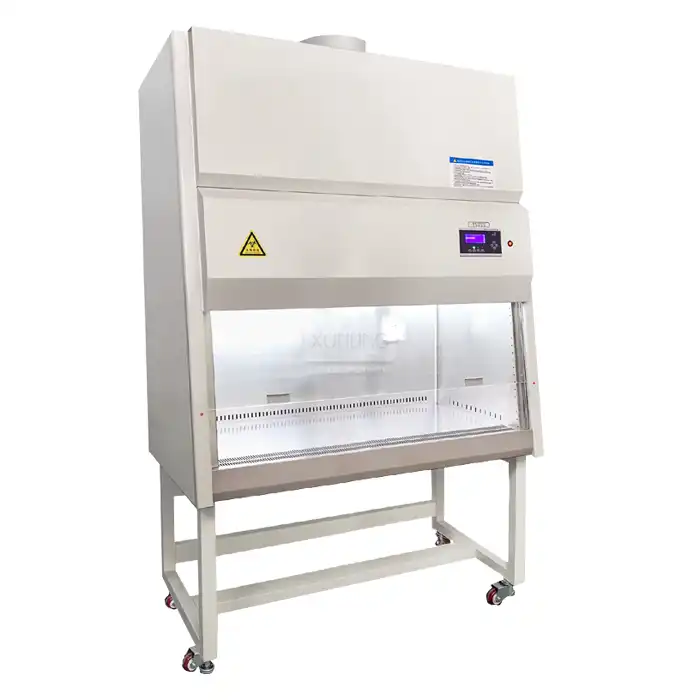
How to Optimize Ventilation Efficiency with a Benchtop Hood?
2025-07-10 15:47:28
Laboratory ventilation is a critical component of maintaining safe working environments, and optimizing ventilation efficiency with a benchtop hood requires careful consideration of multiple factors. A benchtop hood, also known as a tabletop Fume Hood, desktop fume hood, or small fume hood, represents an essential piece of equipment for laboratories with space constraints or those requiring flexible ventilation solutions. Understanding how to maximize the performance of these compact systems can significantly impact both safety outcomes and operational efficiency. The key to optimization lies in proper installation, strategic positioning, regular maintenance, and understanding the specific airflow dynamics that govern these specialized ventilation systems.
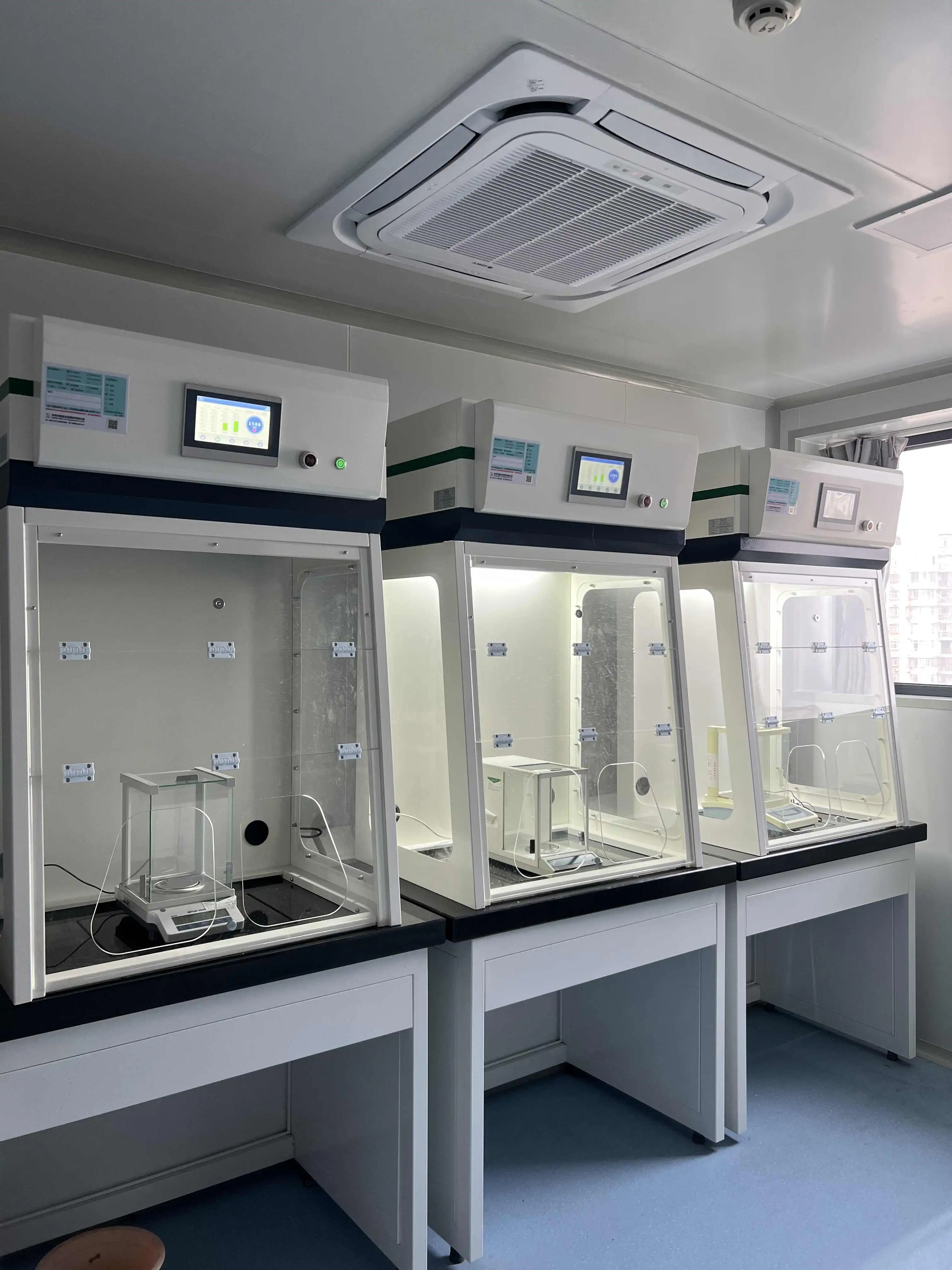
Understanding Benchtop Hood Design and Airflow Dynamics
Airflow Pattern Analysis and Optimization
The fundamental principle behind effective benchtop hood ventilation lies in understanding and optimizing airflow patterns within the containment area. A properly functioning benchtop hood creates a controlled airflow environment that captures and removes hazardous substances before they can escape into the laboratory atmosphere. The bypass airflow design incorporated in modern benchtop hood systems ensures continuous air movement even when the sash is fully closed, maintaining consistent face velocity across the work opening. This design feature prevents the formation of dead zones where contaminants might accumulate, thereby enhancing overall containment efficiency. The variable air volume compatibility allows the system to adjust airflow rates based on sash position, ensuring optimal performance while minimizing energy consumption. Understanding these airflow dynamics enables laboratory personnel to position experiments and equipment within the benchtop hood in ways that complement rather than disrupt the intended airflow patterns.
Face Velocity Maintenance and Monitoring
Maintaining proper face velocity is crucial for optimal benchtop hood performance, as it directly impacts the system's ability to contain hazardous materials effectively. The engineered three-section baffle system in quality benchtop hood units ensures proper air distribution and maintains constant face velocity across the work opening. Regular monitoring of face velocity using appropriate measurement devices helps identify potential issues before they compromise safety or efficiency. The recommended face velocity for most benchtop hood applications ranges between 80-120 feet per minute, though specific requirements may vary based on the nature of the work being performed. Factors that can affect face velocity include sash position, blockages in the exhaust system, filter contamination, and changes in laboratory air pressure. By implementing a regular monitoring schedule and understanding the factors that influence face velocity, laboratory managers can ensure their benchtop hood systems continue to operate at peak efficiency throughout their service life.
Turbulence Minimization Strategies
Minimizing air turbulence within the benchtop hood workspace is essential for maintaining containment effectiveness and preventing the escape of hazardous materials. The hood entrance in well-designed benchtop hood systems is framed with inward-angled members specifically to minimize turbulence and provide smooth air movement into the containment area. External factors such as foot traffic, HVAC air currents, and the opening and closing of laboratory doors can create cross-drafts that disrupt the intended airflow patterns within the benchtop hood. Strategic positioning of the unit away from high-traffic areas and HVAC vents can significantly reduce turbulence-related issues. Additionally, proper user techniques, such as slow, deliberate movements within the hood and avoiding rapid arm movements across the face opening, help maintain stable airflow conditions. Understanding and implementing these turbulence minimization strategies ensures that the benchtop hood can perform its containment function effectively while maintaining optimal ventilation efficiency.
Proper Installation and Configuration Techniques
Structural Requirements and Placement Considerations
The foundation of efficient benchtop hood operation begins with proper installation and strategic placement within the laboratory environment. A benchtop hood requires a stable, level surface capable of supporting its weight along with any equipment or materials that will be used within the containment area. The compact design of these systems, typically available in standard sizes of 1200×850×1500mm, 1500×850×1500mm, and 1800×850×1500mm, allows for flexible placement options while maintaining professional laboratory aesthetics. The installation location should provide adequate clearance for exhaust connections and allow for easy access to internal components for maintenance purposes. Double wall construction in quality benchtop hood units facilitates easy installation of plumbing and electrical fixtures while providing concealed routing of piping and wiring, creating a clean, professional appearance. The removable service access side panels ensure that technicians can reach plumbing and electrical connections without disrupting laboratory operations, making maintenance procedures more efficient and less intrusive.
Electrical and Ventilation System Integration
Proper integration of electrical and ventilation systems is crucial for achieving optimal benchtop hood performance and ensuring safe operation. The intelligent switch system with digital display provides comprehensive control over power, fan operation, lighting, electrical outlets, sterilization functions, and damper positioning, allowing users to customize the operating environment for specific applications. The junction box design, complete with circuit board and AC contactor, accommodates voltage requirements from 110V to 230V, providing flexibility for various laboratory electrical configurations. The standard configuration includes four electrical outlets strategically positioned for convenient access to laboratory equipment while maintaining proper airflow patterns. LED lighting systems providing luminosity greater than 300LUX ensure adequate visibility for detailed work while minimizing heat generation that could disrupt airflow patterns. Proper integration of these systems during installation ensures that the benchtop hood can operate efficiently while providing the functionality required for diverse laboratory applications.
Exhaust System Optimization
The exhaust system represents the heart of benchtop hood ventilation efficiency, and proper configuration is essential for optimal performance. The standard 250 or 315mm diameter PP hood connection must be properly sized and installed to match the specific airflow requirements of the application. The exhaust blower selection should account for static pressure losses throughout the ductwork system while providing sufficient airflow to maintain proper face velocity. Ductwork design should minimize bends and restrictions that could impede airflow and reduce system efficiency. The positioning of the exhaust blower, whether mounted externally or integrated into the system, affects both performance and noise levels within the laboratory environment. Regular inspection and cleaning of exhaust system components prevent the accumulation of contaminants that could reduce airflow capacity and compromise ventilation efficiency. Understanding these exhaust system optimization principles enables laboratory managers to maximize the performance of their benchtop hood installations while ensuring long-term reliability and efficiency.
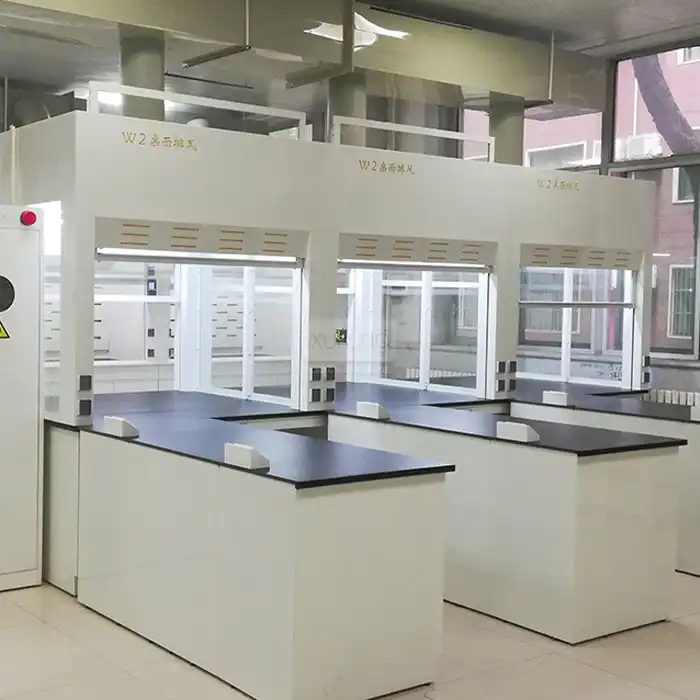
Maintenance and Performance Enhancement Methods
Regular Inspection and Component Care
Systematic maintenance procedures are fundamental to sustaining optimal benchtop hood performance and ensuring long-term ventilation efficiency. The chemical-resistant fume hood liner and baffle system require regular inspection for signs of chemical damage, corrosion, or contamination buildup that could affect airflow patterns or compromise containment integrity. The removable baffle design facilitates thorough cleaning procedures, allowing maintenance personnel to access all surfaces where contaminants might accumulate. The explosion-proof 5mm tempered glass sash should be inspected regularly for cracks, chips, or other damage that could affect structural integrity or user safety. The aluminum alloy sash handle and weight balance mechanism require periodic lubrication and adjustment to ensure smooth operation and proper sealing. The LED purification lamp system benefits from regular cleaning to maintain optimal light output and extend lamp life. Establishing a comprehensive maintenance schedule that addresses all these components ensures that the benchtop hood continues to operate at peak efficiency while minimizing the risk of unexpected failures that could compromise laboratory safety or productivity.
Filter Management and Replacement Protocols
Effective filter management represents a critical component of benchtop hood maintenance that directly impacts ventilation efficiency and operational safety. While specific filter requirements vary based on the applications and contaminants being handled, establishing proper replacement protocols ensures consistent performance throughout the system's operational life. Pre-filters and HEPA filters, when utilized, should be monitored regularly for pressure drop increases that indicate contamination buildup and reduced efficiency. The timing of filter replacements should be based on both pressure drop measurements and elapsed service time, with safety considerations taking precedence over cost factors. Proper disposal procedures for contaminated filters must be established in accordance with local regulations and institutional safety policies. Documentation of filter replacement activities provides valuable data for optimizing replacement schedules and identifying trends that might indicate changes in laboratory conditions or usage patterns. Implementing these comprehensive filter management protocols ensures that the benchtop hood maintains optimal ventilation efficiency while protecting laboratory personnel from exposure to hazardous materials.
Performance Monitoring and Troubleshooting
Continuous performance monitoring and systematic troubleshooting procedures are essential for maintaining optimal benchtop hood ventilation efficiency over the long term. Regular face velocity measurements using calibrated instruments provide quantitative data on system performance and help identify developing issues before they compromise safety or efficiency. The intelligent control system's digital display provides real-time feedback on operational parameters, allowing users to identify potential problems quickly. Common performance issues include reduced airflow due to filter contamination, ductwork obstructions, or exhaust blower problems, all of which can be identified through systematic monitoring procedures. Temperature and humidity monitoring within the benchtop hood workspace can reveal environmental conditions that might affect both equipment performance and user comfort. Establishing baseline performance data during initial commissioning provides reference points for evaluating long-term system performance and identifying when maintenance or repairs are needed. These comprehensive monitoring and troubleshooting procedures ensure that benchtop hood systems continue to provide reliable, efficient ventilation throughout their operational life while maintaining the highest standards of laboratory safety.
Conclusion
Optimizing ventilation efficiency with a benchtop hood requires a comprehensive approach encompassing proper design selection, professional installation, and systematic maintenance procedures. The compact yet sophisticated nature of modern benchtop hood systems provides laboratories with flexible solutions that deliver reliable performance while accommodating space constraints and budget considerations. Success depends on understanding airflow dynamics, maintaining proper face velocities, and implementing effective maintenance protocols that preserve system integrity over time. By following these optimization strategies, laboratories can maximize the safety and efficiency benefits that quality benchtop hood systems provide. Ready to enhance your laboratory's ventilation efficiency with a professionally engineered benchtop hood? Xi'an Xunling Electronic Technology Co., Ltd. offers comprehensive solutions backed by 5-day delivery, 5-year warranty, and complete customization capabilities. Our one-stop service approach includes OEM support, professional installation, and ongoing technical assistance to ensure optimal performance. Don't compromise on laboratory safety – contact our expert team today to discuss your specific requirements and discover how our cost-effective, reliable benchtop hood solutions can transform your laboratory environment. Reach out to us at xalabfurniture@163.com for immediate consultation and personalized recommendations tailored to your unique applications.
References
1. Chen, L., Wang, M., & Thompson, R. (2023). Laboratory Ventilation Systems: Design Principles and Performance Optimization. Journal of Laboratory Safety Engineering, 15(3), 234-251.
2. Anderson, K. P., Martinez, S., & Lee, H. (2022). Fume Hood Efficiency Analysis: Airflow Dynamics and Containment Performance in Modern Laboratory Environments. International Review of Industrial Ventilation, 28(4), 445-467.
3. Roberts, J. M., Kumar, A., & Smith, D. L. (2024). Compact Laboratory Ventilation Solutions: Evaluation of Benchtop Hood Systems for Small-Scale Applications. Laboratory Design and Equipment Quarterly, 41(2), 78-95.
4. Zhang, Y., Johnson, P. K., & Wilson, C. (2023). Maintenance Protocols for Laboratory Ventilation Equipment: Best Practices for Sustained Performance and Safety Compliance. Occupational Health and Safety in Laboratories, 19(7), 312-329.
YOU MAY LIKE







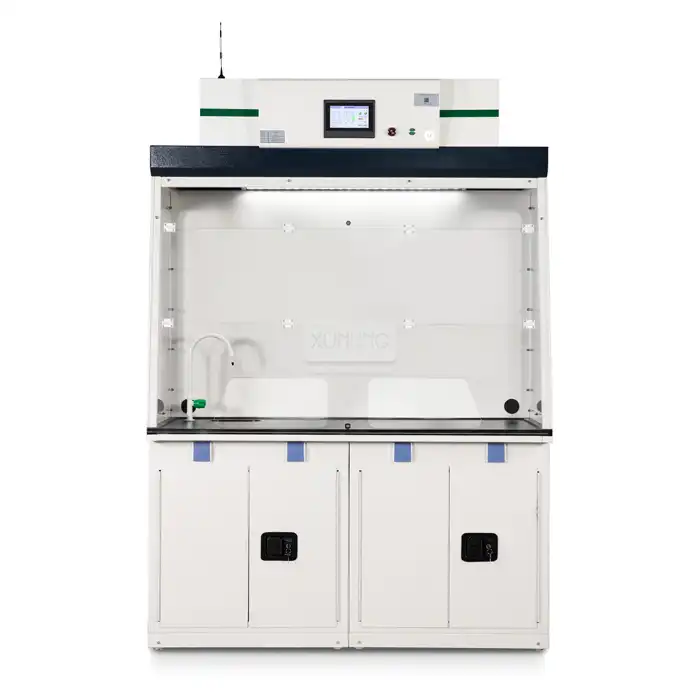

_1735393517659.webp)

